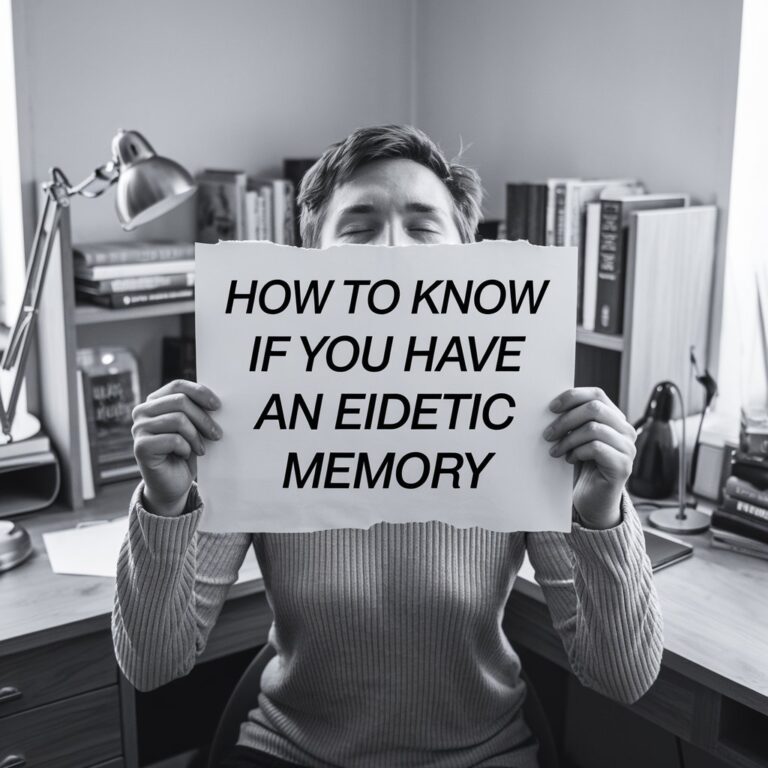Avoiding eye contact can be a perplexing behavior that is frequently linked to a number of underlying characteristics or circumstances. Attention-Deficit/Hyperactivity Disorder (ADHD) has drawn attention among them because of its possible influence on social interactions, particularly eye contact. Although impulsivity, hyperactivity, and inattention are among the symptoms of ADHD that are widely recognized, less is known about the subtleties of how it impacts nonverbal communication, especially eye contact. This article explores in detail is avoiding eye contact a symptom of ADHD, looking at social, neurological, and psychological aspects that are backed by the most recent findings. Readers will have a thorough grasp of how this behavior relates to ADHD, how it affects diagnosis, and how to improve social interactions by the end.
Understanding ADHD and Its Social Manifestations

ADHD’s Impact Beyond the Obvious Symptoms
ADHD is a neurodevelopmental disorder characterized by patterns of inattention, hyperactivity, and impulsivity. However, these core symptoms ripple into broader aspects of life, including social behavior. Individuals with ADHD often face challenges in understanding and responding to social cues, which can affect their ability to establish and maintain relationships. Avoiding eye contact may not be a primary symptom of ADHD, but it often intertwines with the condition’s broader social and emotional impact.
The Role of Executive Dysfunction
Executive dysfunction, or trouble controlling cognitive functions including self-regulation, memory, and attention, is one of the characteristics of ADHD. Because sustaining eye contact necessitates a complex combination of focus, situational awareness, and emotional management, these difficulties can impede social interactions. This interaction might be so overwhelming for those with ADHD that they completely avoid making eye contact.
Eye Contact in Neurotypical Development
Why Eye Contact Matters
A vital component of human communication, eye contact acts as a conduit for information sharing, trust development, and emotional connection. Making and maintaining eye contact is frequently natural and uncomplicated for neurotypical people. The cognitive load necessary to maintain eye contact while processing verbal and nonverbal cues, however, can be overwhelming for people with ADHD.
Eye Contact and Social Reciprocity
Eye contact is crucial to social reciprocity, which is the give-and-take of social relationships. Disrupted attention and impulsivity may make it difficult for people with ADHD to engage in this conversation. Consciously or unconsciously avoiding eye contact as a coping mechanism for anxiety or sensory overload can be one way this disruption shows up.
The Neuroscience Behind ADHD and Eye Contact
How ADHD Affects the Brain
Atypical functioning of the prefrontal cortex, the area of the brain in charge of executive functions, is linked to ADHD. Research indicates that people with ADHD are less active in the medial prefrontal cortex and anterior cingulate cortex, two regions related to social cognition. These variations could make it more difficult to read and react to social cues, including keeping eye contact.
Dopamine Dysregulation and Social Behavior
In people with ADHD, dopamine, a neurotransmitter essential for attention and reward processing, is frequently dysregulated. Eye contact and other prolonged social interactions may become less pleasant or more difficult to continue as a result of this imbalance. Knowing this neurological foundation makes it easier to understand why some people with ADHD may find eye contact overwhelming or uncomfortable.
Eye Tracking Studies in ADHD
According to recent eye-tracking research, people with ADHD frequently exhibit unusual gaze patterns. According to these findings, people with ADHD could pay more attention to peripheral features and less attention to their eyes when interacting with others. These results offer factual support for the association between ADHD and changed eye contact patterns.
Differentiating ADHD from Other Conditions

ADHD vs. Autism Spectrum Disorder (ASD)
It’s critical to differentiate ASD from ADHD, even if avoiding eye contact is a well-documented feature of ASD. Although social communication difficulties are present in both cases, the fundamental causes of eye contact avoidance are different. While avoidance may be caused by issues with social cognition or discomfort with direct stare in ASD, it is frequently linked to inattention or sensory overload in ADHD.
Anxiety and Eye Contact
The association between ADHD and eye contact is complicated by the fact that anxiety and ADHD usually co-occur. People who suffer from social anxiety in particular may be more likely to avoid eye contact because they are afraid of being negatively judged. Accurate diagnosis and intervention depend on being able to distinguish between behaviors caused by anxiety and those linked to ADHD.
Psychological Factors Influencing Eye Contact in ADHD
Sensory Overload
Some stimuli, such as prolonged eye contact, can be overpowering for people with ADHD since they frequently struggle with sensory processing. As a self-regulation technique to control their discomfort and keep their attention on the discussion, this overload may cause them to turn away.
Hyperfocus and Eye Contact
Ironically, hyperfocus episodes, in which people attention intently on particular tasks or subjects, are linked to ADHD. Depending on their emotional state and degree of engagement, they may avoid or make excessive eye contact during these moments.
Emotional Regulation and Social Anxiety
Emotional regulation issues are common in ADHD, and they can make social anxiety worse. Some people use avoiding eye contact as a coping mechanism to deal with the difficulties of interpreting and expressing their emotions.
Practical Implications for Diagnosis and Management
Recognizing Eye Contact Avoidance in ADHD Assessment
Avoiding eye contact can be a useful behavioral cue during evaluations, even though it is not a clear sign of ADHD. To develop a thorough picture of the patient’s difficulties, clinicians should take it into account in addition to other social and cognitive indications.
Supporting Social Skills Development
People with ADHD who have trouble making eye contact can benefit from interventions that focus on social skills. Cognitive-behavioral therapy (CBT), social coaching, and role-playing activities are all useful methods for improving social communication.
Addressing Co-occurring Conditions
A multifaceted approach to treatment is crucial because anxiety, ADHD, and other problems can overlap. Eye contact and general social performance can be indirectly enhanced by treating underlying anxiety or sensory problems.
Strategies for Improving Eye Contact
Gradual Exposure and Practice
Slow exposure can help desensitize people who have trouble making eye contact to discomfort. Over time, maintaining eye contact in relaxed settings can boost self-esteem and lessen nervousness.
Mindfulness and Emotional Regulation
Deep breathing and grounding exercises are two mindfulness practices that can improve emotional control and lessen the tension that comes with making eye contact. People with ADHD, who frequently battle with impulsivity and emotional dysregulation, benefit most from these activities.
Leveraging Technology
Virtual reality (VR) simulations and other technological tools provide creative ways to practice social interactions in a safe setting. Without the stress of real-world situations, these tools can assist people with ADHD increase their eye contact and social confidence.
The Role of Parents, Educators, and Peers
Fostering a Supportive Environment
It is essential to provide a supportive environment for those with ADHD. Peers, parents, and teachers can promote eye contact by positively reinforcing it and modeling it in a nonjudgmental manner.
Educating Others About ADHD
It is possible to lessen stigma and promote understanding by increasing knowledge about ADHD and how it affects social behavior. More inclusive and sympathetic relationships can result from educating others about the difficulties in sustaining eye contact.
Encouraging Strength-Based Approaches
Building self-esteem in people with ADHD can be facilitated by emphasizing strengths like creativity, problem-solving, and resilience. They could feel more at ease interacting socially, including initiating eye contact, when they are appreciated for their distinctive contributions.
Conclusion: Is Avoiding Eye Contact a Symptom of ADHD?
In conclusion, there is no simple solution to the issue, “Is avoiding eye contact a symptom of ADHD?” Although avoiding eye contact is not a primary symptom of ADHD, it is a common habit associated with the disorder because of co-occurring anxiety, inattention, and sensory overload. A sophisticated approach that takes into account psychological, neurological, and social factors is necessary to comprehend the fundamental causes of this behavior. People with ADHD can improve their social connections and confidently handle the difficulties of eye contact by identifying and resolving these variables.
It is critical to reject preconceptions and adopt a comprehensive view of ADHD as research on the disorder continues to reveal its intricacies. Fostering empathy and support can have a big impact on the lives of people with ADHD, enabling them to flourish socially and emotionally, whether you are a therapist, educator, or family member.
FAQs
Do ADHD avoid eye contact?
Because of things like social anxiety, sensory overload, or inattention, many people with ADHD may avoid making eye contact. It is a typical behavioral manifestation impacted by the difficulties of ADHD, although it is not a confirmed symptom.
What are the habits of ADHD?
Impulsivity, procrastination, trouble remaining organized, hyperfocus on particular tasks, forgetfulness, and time management issues are common behaviors associated with ADHD. These behaviors can differ greatly from person to person.
What are the daily struggles of ADHD?
ADHD sufferers face difficulties on a daily basis with attention, routines, emotional control, relationships, and sensory processing. These challenges may affect one’s personal and professional life.
What major life activities are affected by ADHD?
Major life activities like schooling, professional advancement, social interactions, and self-care can all be impacted by ADHD. The degree of symptoms and the support networks in place determine how the disorder affects a person.
What is the hardest thing about ADHD?
Although the most difficult aspects of ADHD vary from person to person, common difficulties include coping with emotional dysregulation, resolving social misunderstandings, and sustaining steady productivity in spite of erratic focus levels.
What is untreated ADHD like?
Significant challenges, such as low self-esteem, strained relationships, underachievement in school or at work, and an increased risk of co-occurring disorders like anxiety or depression, can result from untreated ADHD. Support and early intervention are essential.




